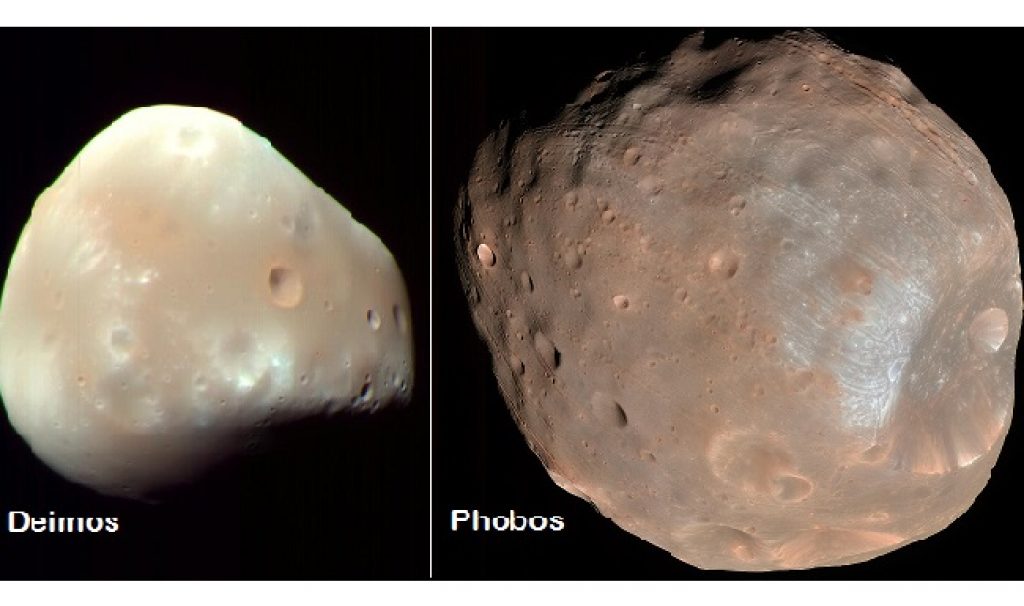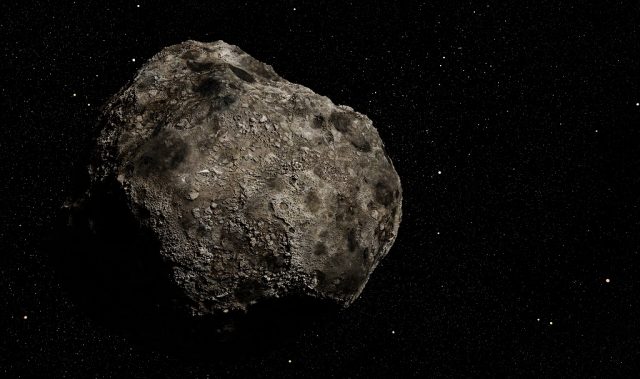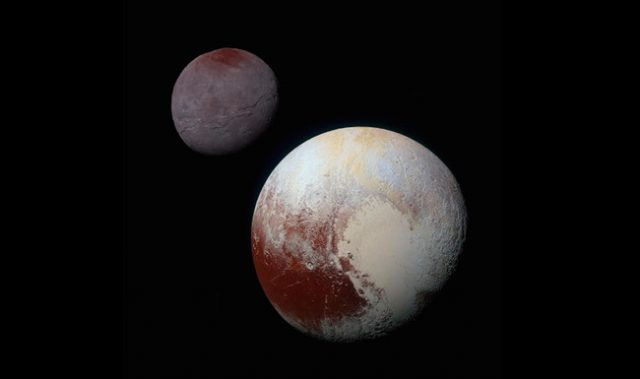
AsianScientist (Jul. 15, 2016) – Astronomers used to believe that the two Martian moons, Phobos and Deimos, were captured asteroids. Now, a team of Japanese researchers, together with scientists from France and Belgium, are challenging this view.
The team, including researchers from Kobe University and the Tokyo Institute of Technology in Japan, investigated the formation process of a disk produced by a potential giant impact on Mars. They also studied how the satellites were formed from this disk. The findings of the research were published in Nature Geoscience.
The captured asteroid theory did not quite explain the current circular and coplanar orbits of Phobos and Deimos, as captured satellites should have eccentric and randomly-oriented orbits.
Mars has Borealis, the largest crater in our solar system, located on its northern hemisphere. A huge impact could have created this crater and while doing so, ejected a lot of materials from around the planet itself. Caught in Mars’ gravitational pull, these materials would have then formed a disk around it. Although researchers had previously proposed that the Martian satellites formed from this disk, little was known about the details of the formation process.
In the present study, the researchers carried out high-resolution 3D simulations for a giant impact that can potentially create Borealis, and calculated the disk’s evolution.
According to their simulations, a huge satellite about 1,000 times the mass of Phobos first formed in the inner disk region. This humongous mass enhanced the accretion of Phobos and Deimos in the outer region. Accretion is where giant masses gravitationally attract and accumulate more matter.
After the formation of the two tiny moons, the huge satellite falls into Mars and eventually disappears. Only Phobos and Deimos remained.
Researchers also found that about a half of the materials from the disk produced by the giant impact originally came from Mars; so, theoretically, Phobos and Deimos should contain materials from Mars.
On a related note, the Japan Aerospace Exploration Agency is now planning a sample return mission from Martian satellites to determine whether they do contain Martian materials.
The article can be found at: Rosenblatt et al. (2016) Accretion Of Phobos And Deimos In An Extended Debris Disc Stirred By Transient Moons.
———
Source:Tokyo Institute of Technology; Photo: NASA/JPL-Caltech.
Disclaimer: This article does not necessarily reflect the views of AsianScientist or its staff.












